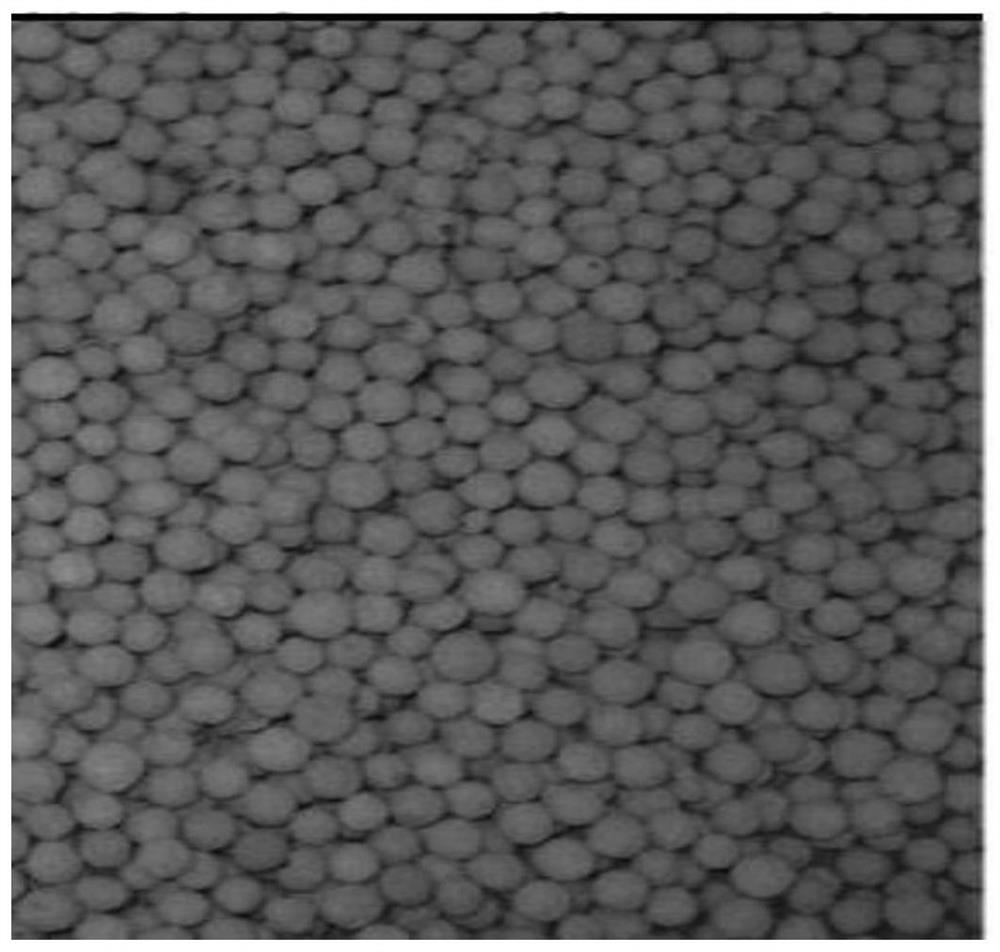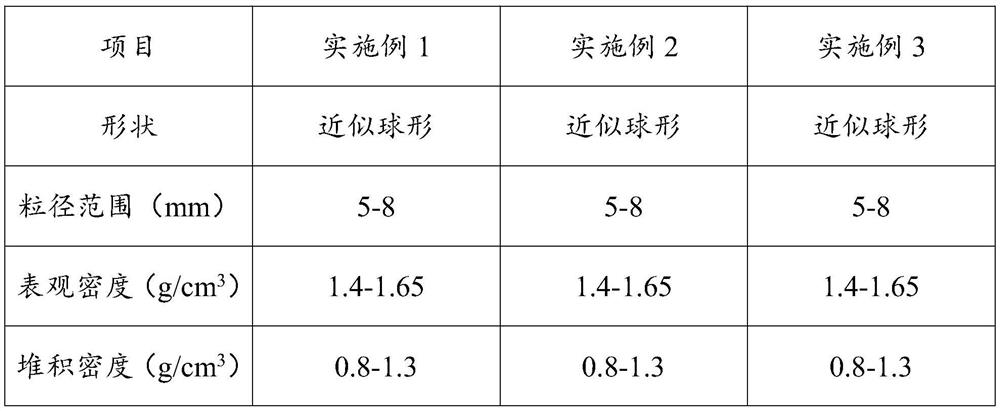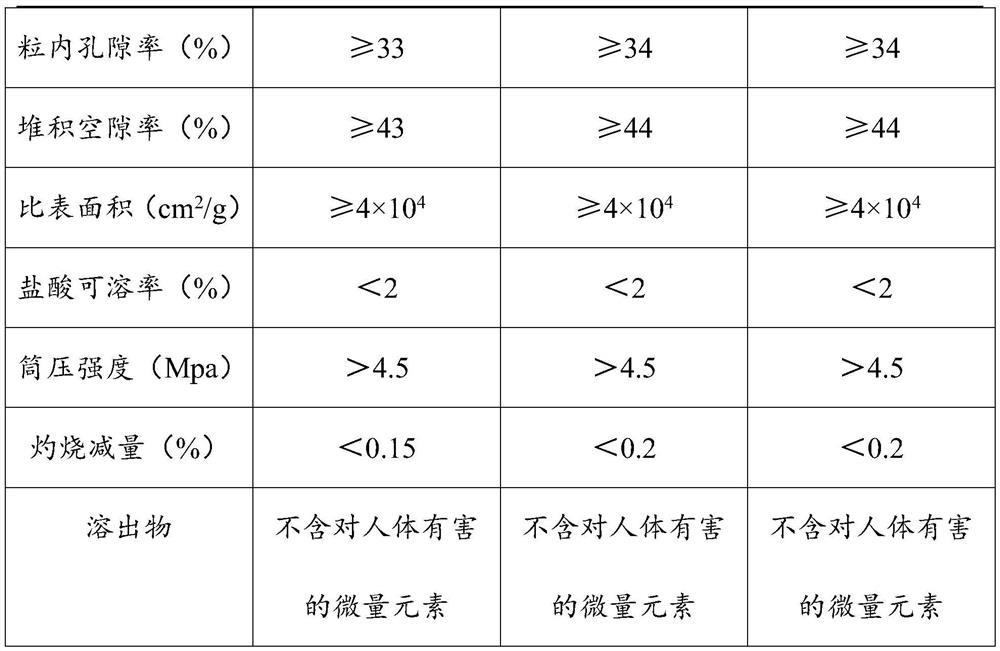A novel lightweight high-porosity ceramic filter material and its preparation method
A high-porosity, ceramic filter material technology, applied in ceramic products, ceramic material production, chemical instruments and methods, etc., can solve the problems affecting the filtration cycle and effluent quality, the lack of roughness of the surface structure, affecting the hydraulic retention time, etc. Achieve the effect of overcoming difficult-to-control and easy-running materials, abundant micropores, and overcoming large head loss
- Summary
- Abstract
- Description
- Claims
- Application Information
AI Technical Summary
Problems solved by technology
Method used
Image
Examples
Embodiment 1
[0030] (1) Take the above-mentioned raw materials according to the ratio of 30 parts of fly ash floating beads, 20 parts of coal gangue, 15 parts of diatomaceous earth, 20 parts of hydroxymethyl cellulose, 6 parts of dolomite powder, 2 parts of rice bran, and 8 parts of limestone;
[0031] (2) Ball milling is carried out after mixing the raw materials taken in step (1), and passing through a 200-mesh sieve after ball milling;
[0032] (3) the blank mixed in step (2) is used as a binding agent in a mortar to make a certain plasticity mud material, and then prepared into pellets with a particle size of 5-8mm;
[0033] (4) Place the sample formed in step (3) in a drying oven to dry at a constant temperature of 50°C for 1 hour;
[0034] (5) Sinter the dried sample in step (4), decompose 1 at 530°C and sinter at 1170°C for 3h before sintering.
[0035] (6) Attaching a layer of carbon nanofibers to the surface of the sample after the sintering in step (5).
Embodiment 2
[0037] (1) Take the above-mentioned raw materials according to the ratio of 35 parts of fly ash floating beads, 25 parts of coal gangue, 20 parts of diatomaceous earth, 25 parts of hydroxymethyl cellulose, 8 parts of dolomite powder, 3 parts of rice bran, and 9 parts of limestone;
[0038] (2) Ball milling is carried out after mixing the raw materials taken in step (1), and passing through a 200-mesh sieve after ball milling;
[0039] (3) the blank mixed in step (2) is used as a binding agent in a mortar to make a certain plasticity mud material, and then prepared into pellets with a particle size of 5-8mm;
[0040] (4) Place the sample formed in step (3) in a drying oven to dry at a constant temperature of 55°C for 2 hours;
[0041] (5) The sample dried in step (4) was sintered, decomposed at 700° C. for 2 hours, and sintered at 1180° C. for 4 hours before sintering.
[0042] (6) Attaching a layer of carbon nanofibers to the surface of the sample after the sintering in step ...
Embodiment 3
[0044] (1) Take the above raw materials according to the ratio of 40 parts of fly ash floating beads, 30 parts of coal gangue, 25 parts of diatomaceous earth, 30 parts of hydroxymethyl cellulose, 9 parts of dolomite powder, 3 parts of rice bran, and 10 parts of limestone;
[0045] (2) Ball milling is carried out after mixing the raw materials taken in step (1), and passing through a 200-mesh sieve after ball milling;
[0046] (3) the blank mixed in step (2) is used as a binding agent in a mortar to make a certain plasticity mud material, and then prepared into pellets with a particle size of 5-8mm;
[0047] (4) Place the sample formed in step (3) in a drying oven to dry at a constant temperature of 60°C for 2 hours;
[0048] (5) The sample dried in step (4) was sintered, decomposed at 850° C. for 2 hours, and sintered at 1200° C. for 4 hours before sintering.
[0049] (6) Attaching a layer of carbon nanofibers to the surface of the sample after the sintering in step (5).
PUM
| Property | Measurement | Unit |
|---|---|---|
| length | aaaaa | aaaaa |
| diameter | aaaaa | aaaaa |
Abstract
Description
Claims
Application Information
 Login to View More
Login to View More - R&D
- Intellectual Property
- Life Sciences
- Materials
- Tech Scout
- Unparalleled Data Quality
- Higher Quality Content
- 60% Fewer Hallucinations
Browse by: Latest US Patents, China's latest patents, Technical Efficacy Thesaurus, Application Domain, Technology Topic, Popular Technical Reports.
© 2025 PatSnap. All rights reserved.Legal|Privacy policy|Modern Slavery Act Transparency Statement|Sitemap|About US| Contact US: help@patsnap.com



